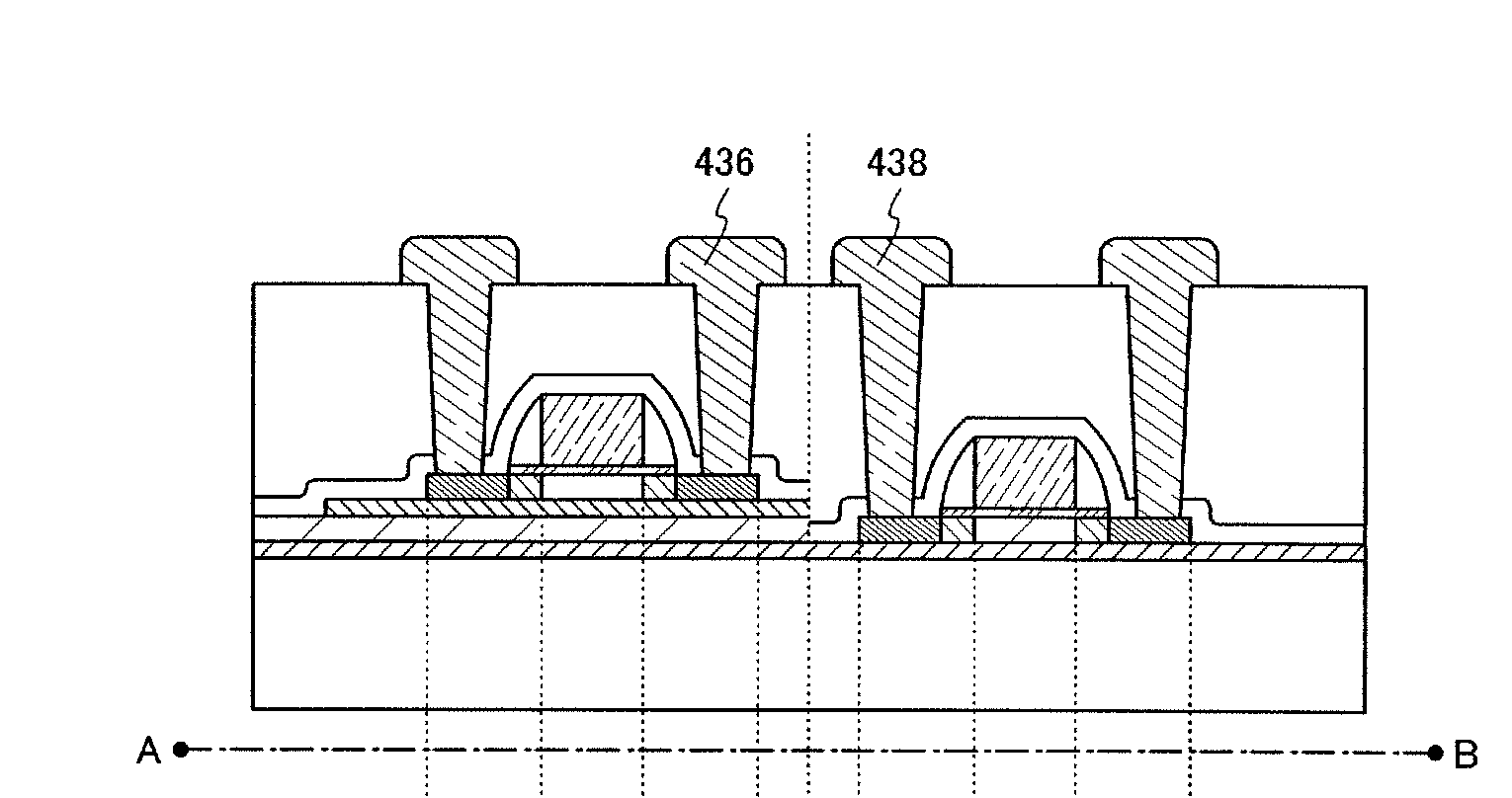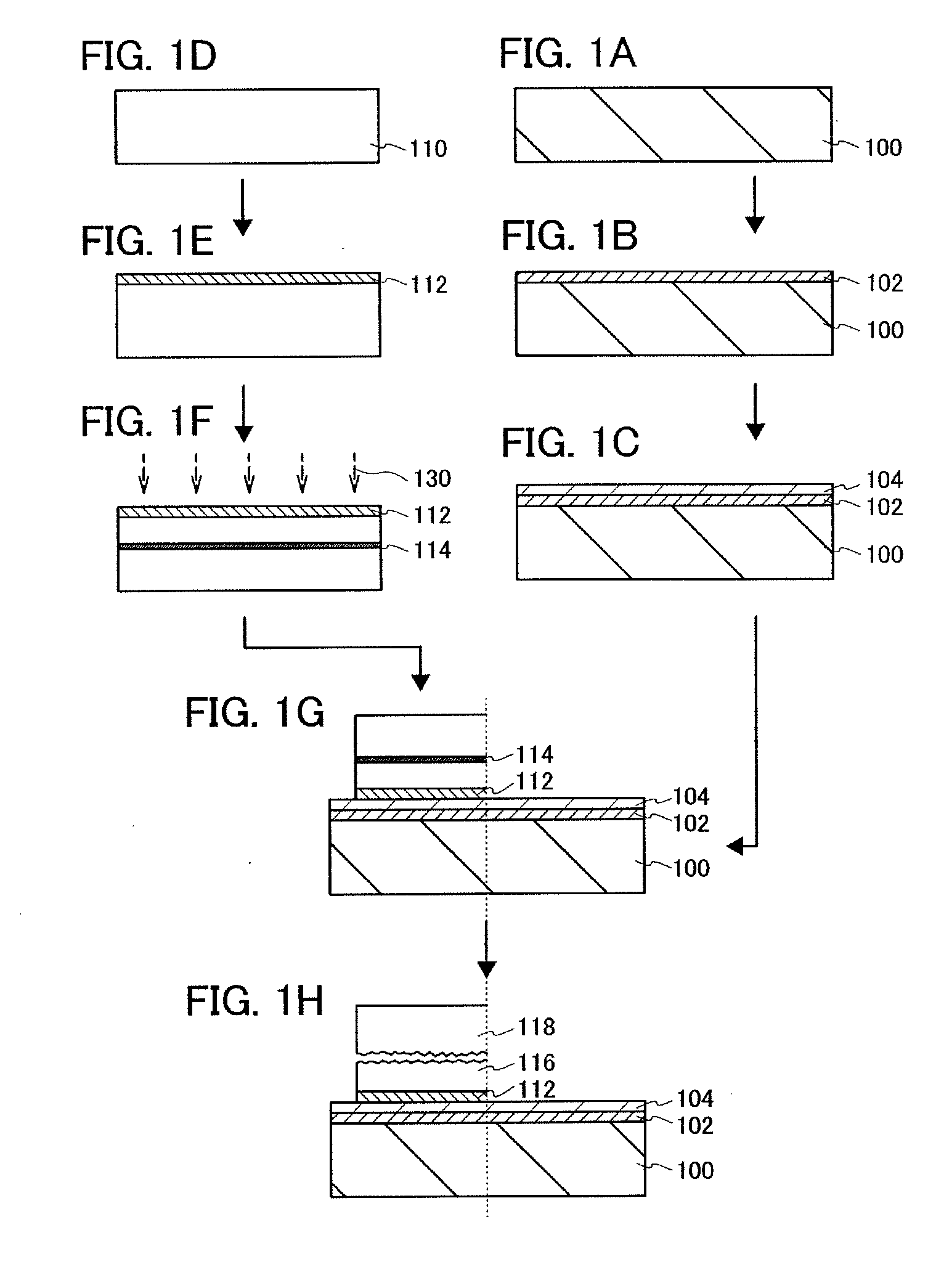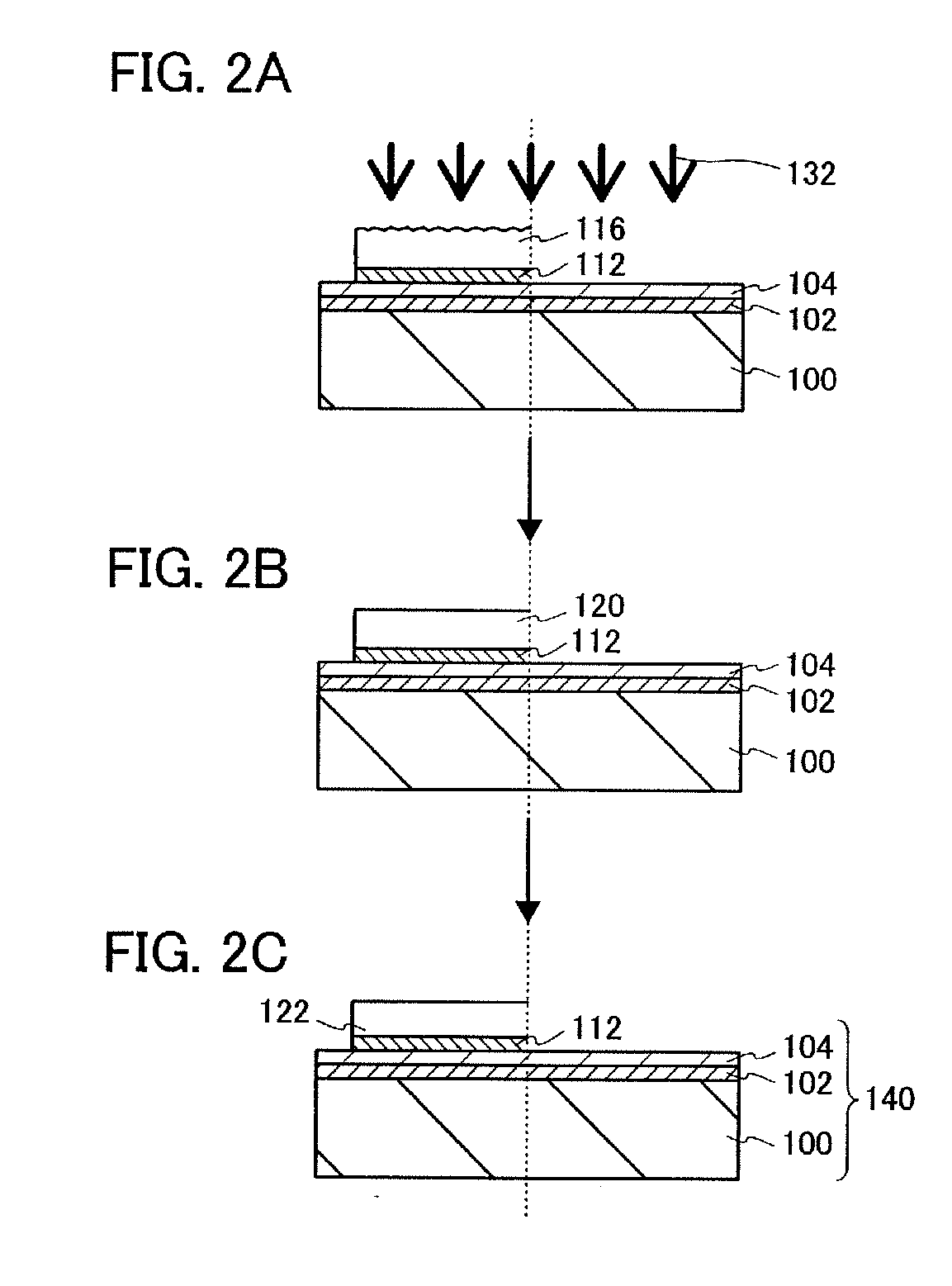Method for manufacturing semiconductor device, semiconductor device and electronic appliance
a semiconductor device and electronic appliance technology, applied in the direction of semiconductor devices, basic electric elements, electrical appliances, etc., can solve the problems of single crystal silicon, driver circuit, semiconductor devices which require high speed operation, etc., and achieve excellent driver circuit, reduce the thickness of the semiconductor device, and high speed
- Summary
- Abstract
- Description
- Claims
- Application Information
AI Technical Summary
Benefits of technology
Problems solved by technology
Method used
Image
Examples
embodiment mode 1
[0056]In this embodiment mode, a method for manufacturing a semiconductor substrate which is used for manufacture of a semiconductor device will be described with reference to FIGS. 1A to 1H, FIGS. 2A to 2C, and FIG. 3.
[0057]First, a base substrate 100 is prepared (see FIG. 1A). As the base substrate 100, a light-transmitting glass substrate used for a liquid crystal display device or the like can be used. As a glass substrate, a substrate having a strain point of greater than or equal to 580° C. and less than or equal to 680° C. (preferably, greater than or equal to 600° C. and less than or equal to 680° C.) may be used. Further, a non-alkali glass substrate is preferable as the glass substrate. As a material of the non-alkali glass substrate, a glass material such as aluminosilicate glass, aluminoborosilicate glass, or barium borosilicate glass is used, for example.
[0058]As the base substrate 100, as well as the glass substrate, a substrate which is formed of an insulator, such as...
embodiment mode 2
[0138]In this embodiment mode, a method for manufacturing a semiconductor device using the semiconductor substrate manufactured in Embodiment Mode 1 will be described with reference to FIGS. 4A to 4D, FIGS. 5A to 5D and FIGS. 6A and 6B. Here, as an example, a method for manufacturing a semiconductor device including a plurality of transistors will be described.
[0139]FIG. 4A is a cross-sectional view of the semiconductor substrate 140 manufactured in Embodiment Mode 1.
[0140]An impurity element imparting p-type conductivity such as boron, aluminum, or gallium or an impurity element imparting n-type conductivity such as phosphorus, or arsenic may be added to a non-single-crystal semiconductor layer 104 and a single crystal semiconductor layer 122 in order to control a threshold voltage of a transistor. A region to which the impurity element is added and the kind of the impurity element to be added can be changed as appropriate. For example, an impurity element imparting p-type conducti...
embodiment mode 3
[0174]In this embodiment mode, another example of a method for manufacturing a semiconductor substrate will be described with reference to FIGS. 7A to 7I and FIGS. 8A to 8C.
[0175]First, a base substrate 100 is prepared (see FIG. 7A). A detailed description of the base substrate 100 is omitted here because Embodiment Mode 1 can be referred to therefor.
[0176]Next, an insulating layer 102 is formed over a surface of the base substrate 100 (see FIG. 7B). The insulating layer 102 may have a single layer structure or a stacked layer structure. Embodiment Mode 1 can be referred to for a detailed description of a material or the like for the insulating layer 102. It is possible to employ a structure in which the insulating layer 102 is not formed; however, when a substrate including an impurity which decreases the reliability of a semiconductor device, such as alkali metal or alkaline earth metal, is used as the base substrate 100, the insulating layer 102 is preferably provided so that suc...
PUM
 Login to View More
Login to View More Abstract
Description
Claims
Application Information
 Login to View More
Login to View More - R&D
- Intellectual Property
- Life Sciences
- Materials
- Tech Scout
- Unparalleled Data Quality
- Higher Quality Content
- 60% Fewer Hallucinations
Browse by: Latest US Patents, China's latest patents, Technical Efficacy Thesaurus, Application Domain, Technology Topic, Popular Technical Reports.
© 2025 PatSnap. All rights reserved.Legal|Privacy policy|Modern Slavery Act Transparency Statement|Sitemap|About US| Contact US: help@patsnap.com



